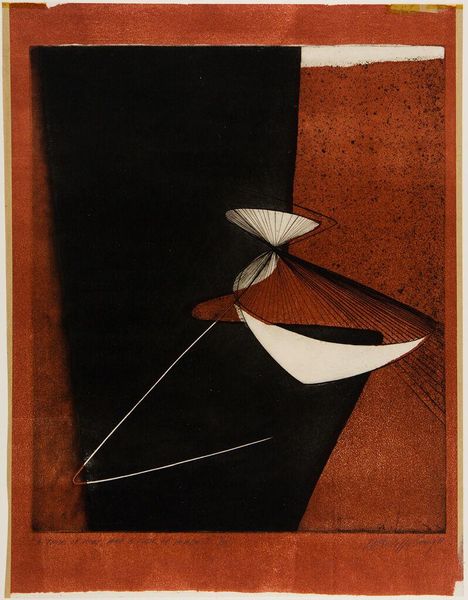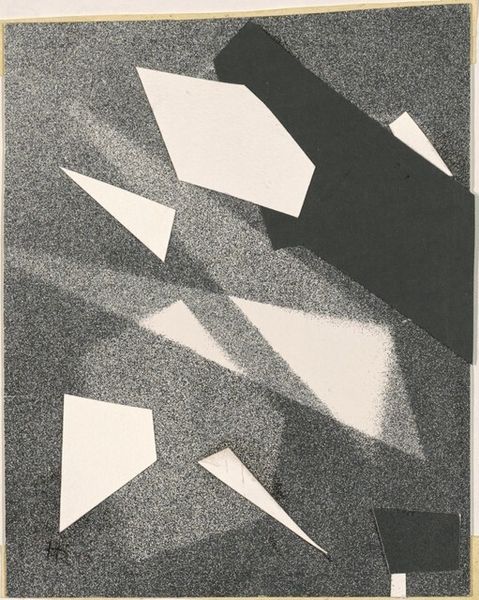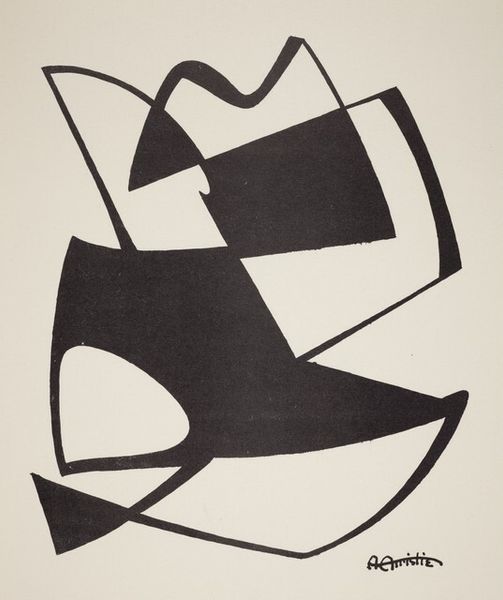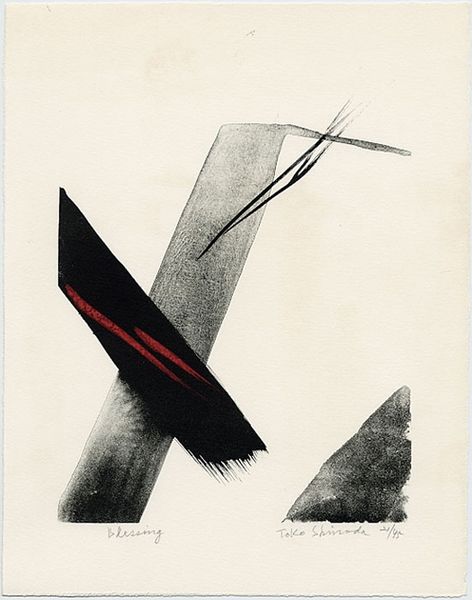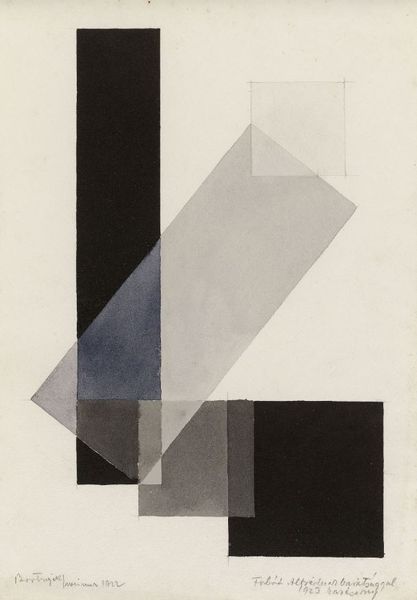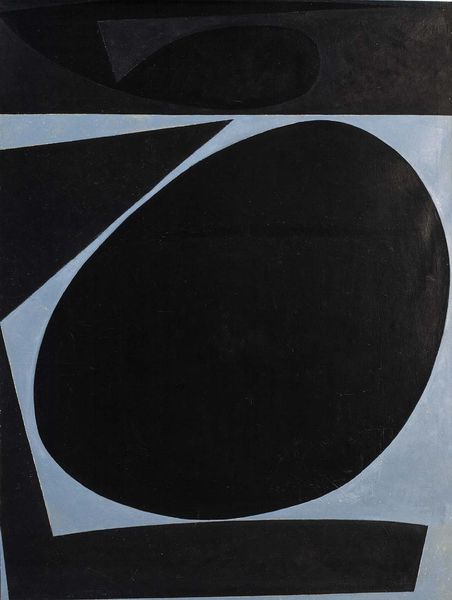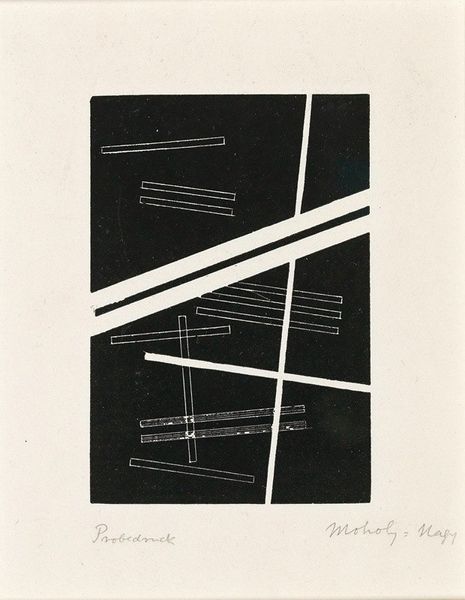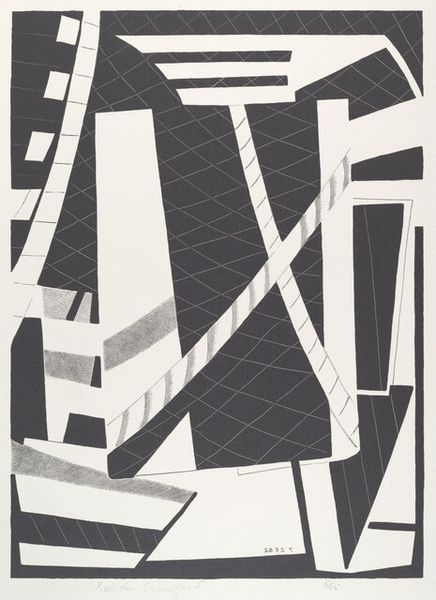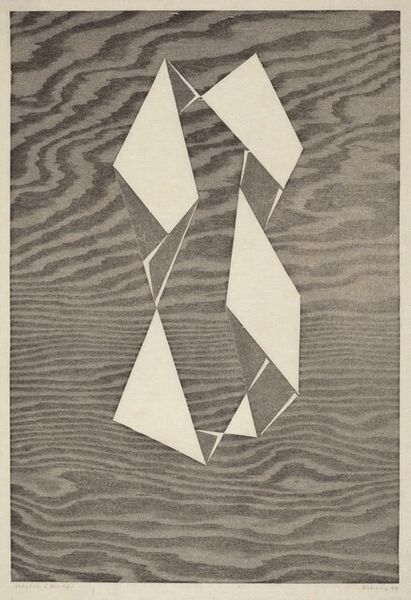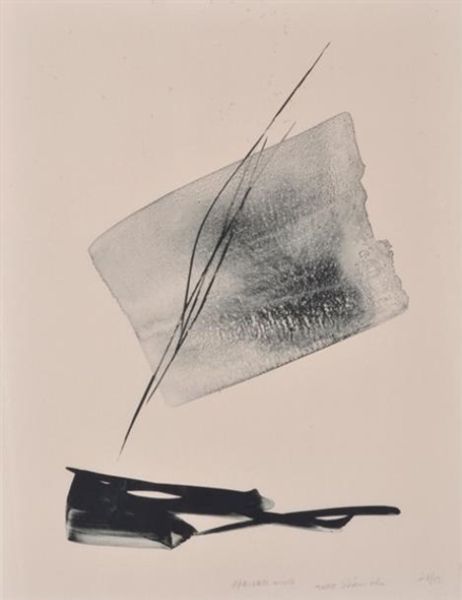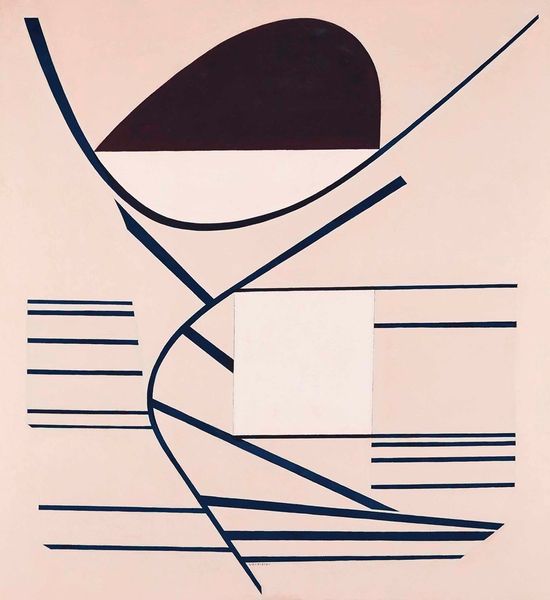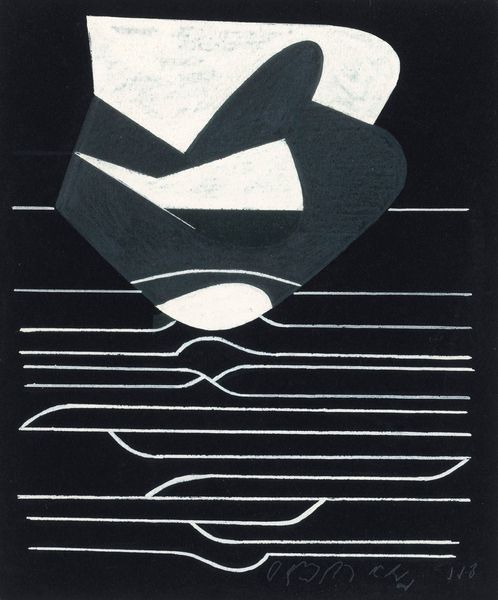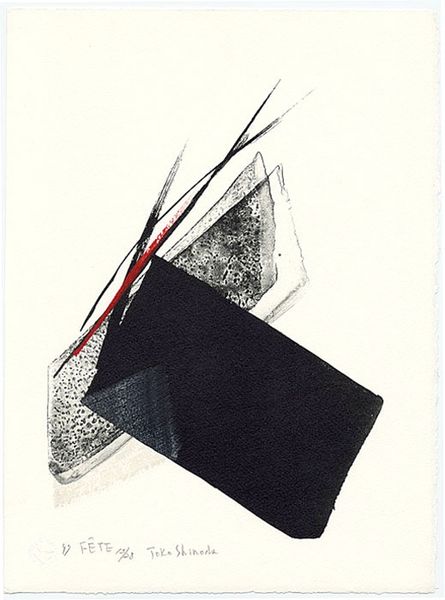
drawing, paper, graphite
#
drawing
#
sculpture
#
paper
#
abstract
#
geometric
#
geometric-abstraction
#
line
#
graphite
#
bauhaus
#
monochrome
Copyright: Public Domain: Artvee
Curator: L\u00e1szl\u00f3 Moholy-Nagy created this graphite drawing, titled "Konstruktion V," in 1923. It’s rendered on paper in stark monochrome. What is your initial reading? Editor: My first thought is that it's an incredibly stark image. The contrast between the geometric forms and the dark background creates a real sense of drama. It feels like something is about to…explode, or perhaps collapse. Curator: Interesting. Considering Moholy-Nagy's Bauhaus background, do you see any echoes of the movement’s emphasis on geometric form and industrial materials? The composition emphasizes line and shape, and de-emphasizes any representation. Editor: Absolutely. I see a longing for a futuristic city. The severe geometries evoke both the modern skyscrapers and a sense of utopian order which, I think, encapsulates many feelings toward industrial advances at this time. But the shapes also seem precarious, almost threatening. Curator: Threatening how? I read the overlapping shapes and linear style as optimistic—a testament to a machine-made aesthetic. A formal analysis of the overlapping structures yields nothing "threatening." It is merely a set of forms, meticulously organized. Editor: Perhaps not formally, but the darkness surrounding the geometries weighs down my response, the implied weight seems ready to crush these constructed forms, a dark future looming. Perhaps it is simply the effect of light against the darkness, but there’s an ominous quality I can't ignore. The spear pointing toward the upper corner… Curator: I see what you are describing, although I hesitate to ascribe meaning so easily. The single floating line, intersecting the upper rhombus figure may very well symbolize an upward trajectory, rather than a harbinger of future problems. This, considered in tandem with the arc's clear forward-pushing gesture suggests momentum rather than dread. Editor: Well, regardless, I think it reveals how effectively Moholy-Nagy used abstraction to explore complex feelings about modernity and its possible futures, light or darkness. Curator: A valuable perspective. It is through these layers of analysis that we enrich our understanding of the art’s aesthetic and enduring influence. Editor: Indeed, and it underscores the complexities and uncertainties inherent to rapid industrial advancement.
Comments
No comments
Be the first to comment and join the conversation on the ultimate creative platform.
